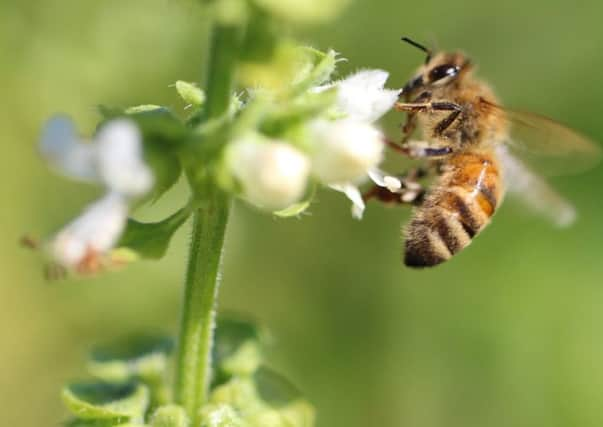Scientists fight to save Scottish bees from deadly disease


Three hives were burned at Honeyhill Bee Farm near St Cyrus in Aberdeenshire this week on the order of government inspectors after American Foulbrood (AFB) was detected at two apiaries during a routine check.
The disease is the latest threat to Scottish animal life to be investigated by Science & Advice for Scottish Agriculture, which is based at Gogarbank on the outskirts of Edinburgh.
Advertisement
Hide AdAdvertisement
Hide AdGavin Ramsay, of Scottish Beekepers Association, described American Foulbrood as a “very serious disease “ which could have “devastating effect” on the small beekeeper while impacting on Scotland’s bee population at large.


DNA from the infected bees will be examined in due course but it is understood that the disease – first discovered more than 100 years ago – has lain dormant in the north-east for some time. Meanwhile, beekeepers have been urged to cease the import of cheap bees from southern Europe, including Italy and Spain, in order to protect the health of Scotland’s bee colonies as far as possible, although there is no known link between imports and the St Cyrus outbreak.
Mr Ramsay said it was likely the spores which led to the outbreak were formed decades ago.
He said: “It is really a very long established disease that has been around for as long as people have been keeping bees.


“It is a bacterial disease with spores that last several decades. It is a disease that lingers, possibly in old beekeeping equipment such as old combs, which are used for raising broods and honey storage.”
The National Bee Unit has reported 37 cases of American Foulbrood in Aberdeenshire and Angus since 1999.
On whether more cases are likely in Scotland, Mr Ramsay said: “It’s a possibility. Usually inspectors will be having a good look around the area. There may be a risk that is can spread if bee keepers sell bees to other keepers or have strong links to another bee farm.”
Mr Ramsay said beekeepers must remain vigilant and check carefully for signs of disease.
Advertisement
Hide AdAdvertisement
Hide AdHe added: “The implications for bees in Scotland are significant, this is a serious disease. Vigilance is really important. We don’t want to get into a situation where numbers of colonies have to be destroyed. Bees are very important pollinators and honeybees are very important pollinators of fruit crops. You also have honey production to bear in mind. It is very important that we keep numbers of honey bees in Scotland.”
While there is no evidence that the St Cyrus outbreak is linked to bee imports, Mr Ramsay added: “People are buying in bees because they are relatively cheaply produced in southern Europe.
“There are strong voices in the bee keeping community to avoid this and disease is one of the reasons.
“A lot of keepers feel that is risking the health of bees in Scotland and the UK.”
The outbreak follows discovery of another potentially lethal bacteria found in the Scottish environment this year – known as Alabama Rot – which has led to the death of three dogs in the Central Belt. A greyhound, Labrador and a flat coat retriever, from Midlothian and West Lothian, have been killed by the bug but all had been exercising in different areas before they became infected, said Dr Tim Nuttall of the Hospital for Small Animals at Edinburgh University’s Royal School of Veterinary Studies.
A fourth case in the Glasgow area is suspicious, but not confirmed.
Dr Nuttall said: “This disease has been about for a long while and it was originally seen in racing greyhound in Alabama and linked to them being fed raw meat.” He said the disease was caused by a bacteria possibly more prevalent in cold, wet weather, which discharges a toxin that dogs can become exposed to while out walking. Blood vessels can come under attack, which can prove fatal if the toxin reaches the kidneys.
“It is a very serious but rare disease. I would urge dog owners not to change their routine – and not to panic.” He said climate change may be behind the bacteria emerging in Scotland given the warmer, wetter winters and that he did not anticipate to see any new cases over the summer.
Advertisement
Hide AdAdvertisement
Hide AdA drop in temperature later in the year could trigger new cases, Dr Nuttall added.
DOWNLOAD THE SCOTSMAN APP ON ITUNES OR GOOGLE PLAY
